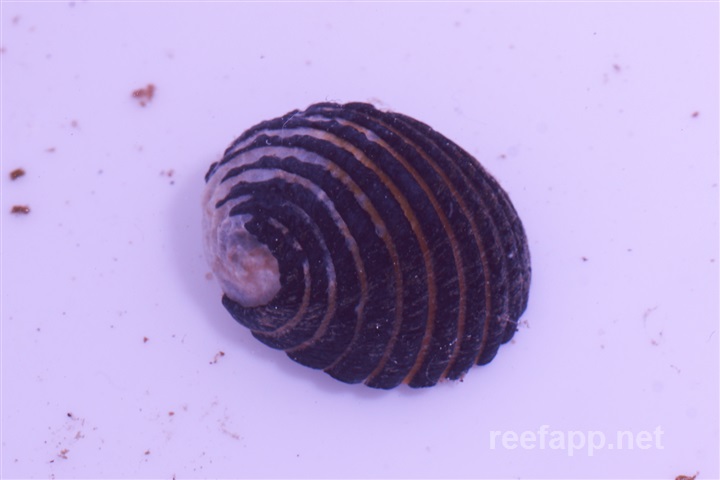Nerita sp.


| Latin name | Nerita sp. |
|---|---|
| Local name | Nerite |
| Family | Gastropods - Nerita |
| Origin | |
| Max length | cm (") |
| Minimum volume |
50 l (13 gal) |
|---|---|
| Hardiness |
Hardy |
| Suitable for aquarium |
Suitable for most aquarium |
| Reef safe |
Always reef safe |
| Aggressiveness | Peaceful |
| Mostly |
Microalgea (Eg. spirulina) |
|---|
This species helps keeping the aquarium free from algea.
It will primary eat from liverock and algae covering the glass.
Several Nerita species live above the waterline in mangrove, therefore they might crawl out of the aquarium, while other species are excellent algae eaters for marine aquariums.
There are many different kinds of sea snails or marine gastropods, but their most common purpose is ridding aquaria of algae and leftover foods. A few species are also bought for decorative purposes.
Many of them can however be a nuisance in coral aquaria, but it is often difficult to identify which ones.
The information found on this page is primarily on the subject of snails found in the aquarium trade.
Pictures of many types of snails can be found here: Hardy's Internet Guide to Marine Gastropods.
Ronald M. Shimek. 2004. The Grazing Snails, Part I - Turbo, Trochus, Astraea, and Kin - Reefkeeping Magazine - (English)
Ronald M. Shimek. 2004. The Grazing Snails, Part II - Turbo, Trochus, Astraea, and Kin - Reefkeeping Magazine - (English)
Julian Sprung. 2003. Aquarium Invertebrates: Nerites: Bleeding Tooth, Zebras, Checkers And More - Advanced Aquarist - (English)
Dave Wolfenden. 2014. Keeping Turbo and friends - Practical Reefkeeping - (English)
Ronald L. Shimek. 2004. The Grazing Snails, Part I - Turbo, Trochus, Astraea, and Kin - Reefkeeping Magazine - (English)

